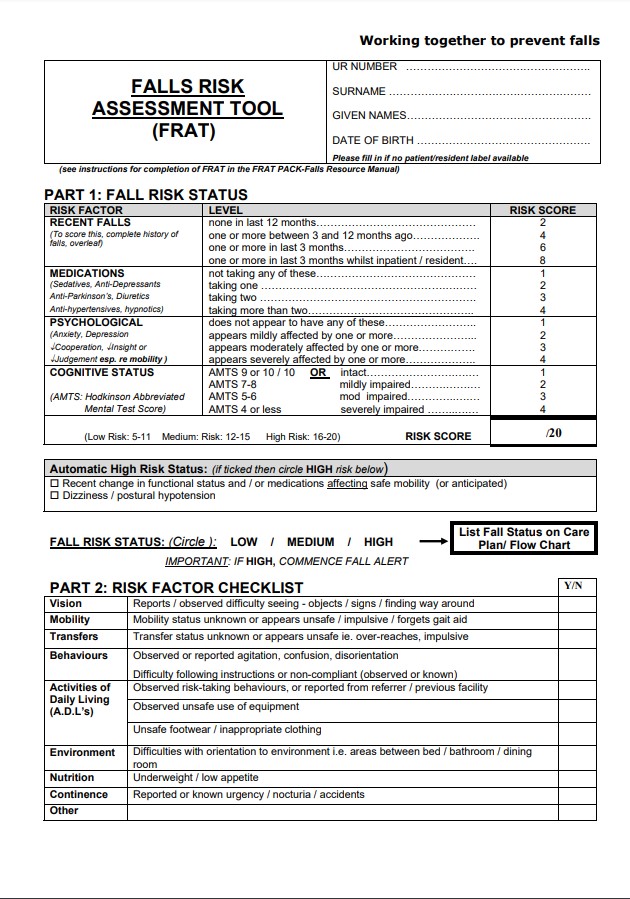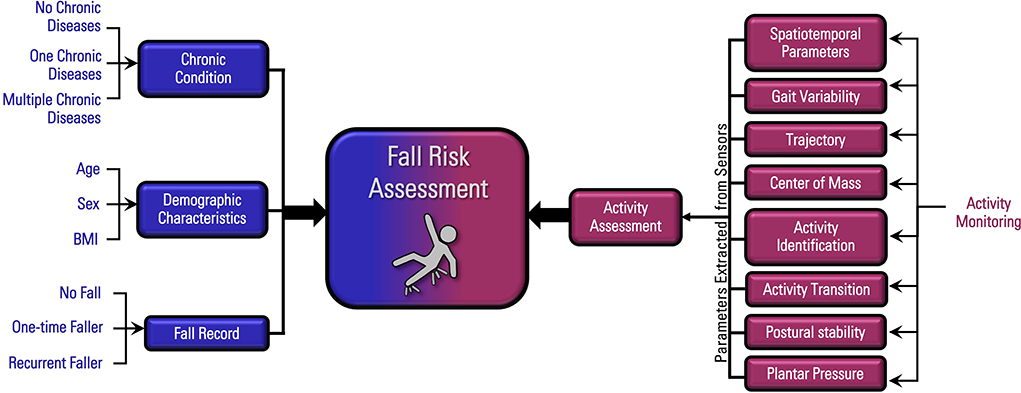Get This Report on Dementia Fall Risk
Table of ContentsThe 15-Second Trick For Dementia Fall RiskSome Known Factual Statements About Dementia Fall Risk The Definitive Guide for Dementia Fall RiskDementia Fall Risk - TruthsGet This Report about Dementia Fall Risk
You could be anxious because you've had an autumn before or since you've observed you're beginning to feel unstable on your feet. You may have noticed modifications to your wellness, or just really feel like you're reducing a little. Whatever the reason, it isn't unusual to become mindful and lose self-confidence, and this can quit you doing the important things you utilized to do and make you really feel much more separated.If you have actually had a loss or you've started to really feel unstable, inform your doctor even if you feel fine or else. Your medical professional can examine your balance and the method you walk to see if enhancements can be made. They may have the ability to refer you for a falls danger assessment or to the drops prevention solution.
This info can be acquired through meetings with the person, their caretakers, and a review of their medical documents. Begin by asking the specific about their history of falls, including the regularity and circumstances of any recent falls. Dementia Fall Risk. Inquire regarding any kind of mobility problems they may experience, such as unsteady or difficulty walking
Conduct a detailed review of the individual's medications, paying particular attention to those known to enhance the risk of falls, such as sedatives or medications that lower high blood pressure. Determine if they are taking multiple medications or if there have been current adjustments in their drug program. Assess the individual's home environment for potential hazards that could increase the danger of drops, such as bad lighting, loose rugs, or absence of grab bars in the washroom.
5 Easy Facts About Dementia Fall Risk Shown
Overview the individual via the autumn risk analysis type, explaining each inquiry and tape-recording their responses properly. Guarantee that the specific comprehends the purpose of the evaluation and feels comfy providing sincere answers. Determine the total danger rating based on the actions provided in the evaluation form. Identify the person's risk classification (reduced, medium, or high) based on the complete rating and the presence of automatic risky status elements.
This plan may include exercise programs to enhance strength and balance, medicine changes, home alterations, and references to various other specialists as needed. On a regular basis check the person's progress and reassess their risk of drops as required. Change the treatment strategy based upon modifications in their wellness standing or home setting. Supply continuous education and learning and assistance to promote security and decrease the risk of falls in their daily living tasks.
Several research studies have actually shown that physical treatment can help to minimize the threat of falling in grownups ages 65 and older. In a new research study (that looked at falls threat in women ages 80 and older), researchers computed the economic effect of picking physical treatment to avoid drops, and they found that doing so saves $2,144, consisting of all the surprise costs of your time, pain, missed out on life occasions, and the this link bucks paid for services.
Get This Report about Dementia Fall Risk
Inspecting your heart rate and high blood pressure measurements at rest and while you change positions (from resting or existing to standing). A straightforward examination of your reasoning (cognitive) capabilities. Analyzing your equilibrium, stamina, and walking ability. A simple vision test. Assessing your feet and shoes. A home security assessment. Based on the assessment results, your physical therapist will design a strategy that is customized to your particular needs.
Older grownups who have difficulty strolling and speaking at the same time go to a greater danger of falling. Dementia Fall Risk. To aid boost your safety throughout daily tasks, your physiotherapist may make a training program that will test you to preserve standing and strolling while you do one more job. Examples consist of walking or standing while counting backward, having a conversation, or carrying a bag of groceries
Establish objectives Look At This for enhancing their physical task. Work out more to enhance their toughness and equilibrium. These programs frequently are led by volunteer instructors.
An Unbiased View of Dementia Fall Risk

Measles, or rubeola, is an extremely infectious, acute viral infectious disease triggered by the measles infection. Some individuals believe of measles as just a breakout and high temperature that link removes up in a few days; however, measles can create significant wellness issues, particularly in children more youthful than 5-years-old. The most effective security against measles is the measles, mumps, and rubella (MMR) vaccination.
Autumns are a common source of injury amongst older adults. According to the CDC, in one year alone, fall-related injuries added to over $50 billion in clinical costs (Dementia Fall Risk). In hospital setups, older adults go to especially high risk of drops because their lowered wheelchair from being restricted to an area or bed.
How Dementia Fall Risk can Save You Time, Stress, and Money.

She has a clinical history of seizure condition and hypertension. She is receiving an IV infusion and taking Gabapentin and Lasix. She has no background of drops, her stride is consistent, and she nullifies without any issues. The previous nurse states that she calls for aid to the washroom when she requires to go.
Examples of usual loss interventions/measures include: Guaranteeing a patient's essential things are accessible. Putting the person's bed rails up with the alarm system on. Assisting a patient while they're rising from bed. Beyond recognizing exactly how to use the Johns Hopkins Loss Danger Assessment Device, it's vital that centers include its use right into a much more detailed fall prevention strategy.